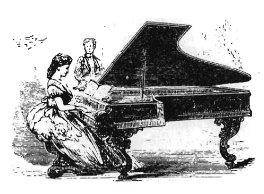Articles/Essays – Volume 11, No. 1
BYU Studies, How She Is
Brigham Young University Studies
A Voice For the Community of LDS Scholars
People are always asking me how I like working at BYU Studies. I say:
- It’s not as good as playing softball behind the Meadow Ward meetinghouse.
- It’s not as bad as leprosy, hog cholera, or stepping on a nail in the barnyard.
- It’s not as good as drinking chocolate milk and reading Tarzan and the Jewels of Opar on a long afternoon in the summertime.
That’s what I would like to say. What I really say is that work is, after all, work, and it is a mercy when any work has its moments—as work at BYU Studies certainly does.
Some of those moments are bad moments:
“Could you tell me whatever happened to that article I submitted to you in 1968 I think it was?”
- It fell down behind the stove.
- It was seized in a Correlation Committee blitzkrieg.
- Rats ate it.
That’s what I would like to say. What I really say is that it is out to a reader right now. What I don’t say is that the reader was lost off the coast of the Philippines in the Spanish-American War.
“But why can’t you use my article on ‘Chiasmus in the Nauvoo Expositor’?”
- Three graduate interns have already perished of ennui while trying to read it.
- Too long.
- Too short.
- Too much jam on page three.
That’s what I would like to say. What I really say is, “We have three special issues coming up. Why don’t you send it to Dialogue?”
But through it all I am restrained from throwing my typewriter through the window by the fact that I have no window. Also, by the fact that BYU Studies has its good moments as well. Such as . . .
- When we get an envelope in the mail from Stan Kimball with SPECIAL ANNOUNCEMENT: THESE ARE POSITIVELY, DEFINITELY, AND PERHAPS THE LAST OF THE CHANGES typed on the outside, and on the inside a manuscript that looks like The Rape of the Sabine Women.
- When I’m proofreading a set of galleys, and I read: “At the peak of this agricultural stagnation and business acceleration, the dark daks of economic depression descended.”
- The realization, finally, that a scholarly journal has its own aesthetic: black ink on thick cream paper. Author, title, place of publication, publisher, date of publication, page number. And that when a fine mind, a good heart, and an unfailing faith unite in impeccable order on that cream-colored page, that is lovely and fine.
Did you like “Beyond Politics,” “Liberating Form,” “The Meaning of Christ,” “Joseph Knight’s Recollection of Early Mormon History,” “The Old Philosopher”? I read them before you did and helped set them on the page. And when I cut the plastic wrap on the first copy of a new issue, that’s a good day.
That’s what I want to say. And that’s what I do say.


 Back to full Issue
Back to full Issue

